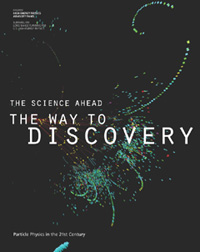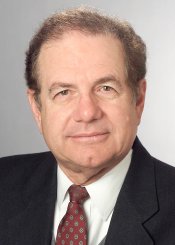 |
|
Potomac Parley Presents Ray Orbach: "I want [the U.S. program] to be the best high-energy physics program in the world." by Judy Jackson
Old Town Alexandria, Virginia, just south of Washington, DC, has seen its share of American history since its founding in 1669. As a 17-year-old surveyor’s helper, George Washington helped lay out the city’s pattern of streets and later drilled Revolutionary troops in Market Square. Earlier this month, at its meeting in Alexandria, the High Energy Physics Advisory Panel made history once again by laying out for the troops of U.S. high-energy physics the new Particle Physics Project Prioritization Panel. Dubbed P5, it represents the field’s first formal organization to evaluate and rank “medium-sized ”particle physics projects on a national scale. Physicist Fred Gilman, of Carnegie-Mellon University, HEPAP’s chair, presented the P5 charge to panel members on November 7, the first day of the panel’s two-day Alexandria meeting. Gilman also announced the group’s membership and its chair, Abe Seiden of the University of California at Santa Cruz. Gilman said P5 would be organized as a subpanel of HEPAP with a two-year lifetime. Following the traditional subpanel model, P5 will communicate its advice to HEPAP, which will in turn transmit its recommendations to the Department of Energy and the National Science Foundation, the federal agencies that fund U.S. particle physics. The recommendations would then be used to update the “roadmap ”of projects constituting the national program of particle physics research. Gilman defined the “medium-sized projects” within P5’s purview as those costing between $50 million and $600 million. The lively discussion among HEPAP members and others following Gilman’s presentation centered on how and by whom projects would be presented to the P5 group for consideration, with most agreeing that proposals would come through the funding agencies to the subpanel.
An official of the Administration’s Office of Management and Budget, listening to the discussion from the audience, said he hoped that P5 members would include all unfunded projects, even those previously approved, in the prioritization process. In contrast, some other scientific fields follow a practice of prioritizing only new proposals, rather than considering the entire slate of as-yet-unfunded projects. Earlier in the day, HEPAP members heard from DOE Office of Science Director Raymond Orbach, who opened his remarks by acknowledging the budgetary difficulties confronting the field of particle physics. “We have seen flat budgets for the Office of Science for the past ten years, resulting in a twenty percent decrease in effective funding.” Orbach said.“No field feels that more than high-energy physics.” Nevertheless, Orbach said, he wants U.S. particle physics to be the best in the world. “It is critical that we maintain scientific leadership,” he said. “My immediate goal is to call attention to the scientific opportunities for high-energy physics in this century. I hope that these opportunities will change this funding picture.”
Orbach encouraged HEPAP to produce a plan to ensure continued U.S. leadership in high energy physics research and called the formation of the P5 panel “terribly important.” He also pointed to the special role of accelerators and accelerator research in DOE Office of Science research programs. “Every program that we have, in one way or another, depends on accelerators,” he said.“I want to call attention to the opportunities that accelerator science brings.” Orbach said he was pleased with the results of the recent DOE review of Tevatron luminosity,held at Fermilab October 28-31, and expressed confidence that both Fermilab and SLAC are “very well run,” despite funding problems that put them “up against the wall.” He encouraged HEPAP to work with Fermilab to maximize the Tevatron’s performance in the period before Europe’s Large Hadron Collider begins operating later in the decade. “This may require massive contributions from the community,” Orbach said. “I ask you to bring all the power you have to bear in the high-energy physics community. It may mean taking unusual steps, but I urge you to work with Fermilab to see a path forward. I just don’t want us to be second. It would be awful if we didn’t marshal our resources. I know it will be difficult, but I encourage you to do this.”
P5 Charge - A letter to HEPAP Chair Fred Gilman, signed by DOE Office of Science Director Raymond Orbach and NSF Acting Assistant Director for Mathematical and Physical Science, John Hunt, presented the charge to P5.
ON THE WEB: |


